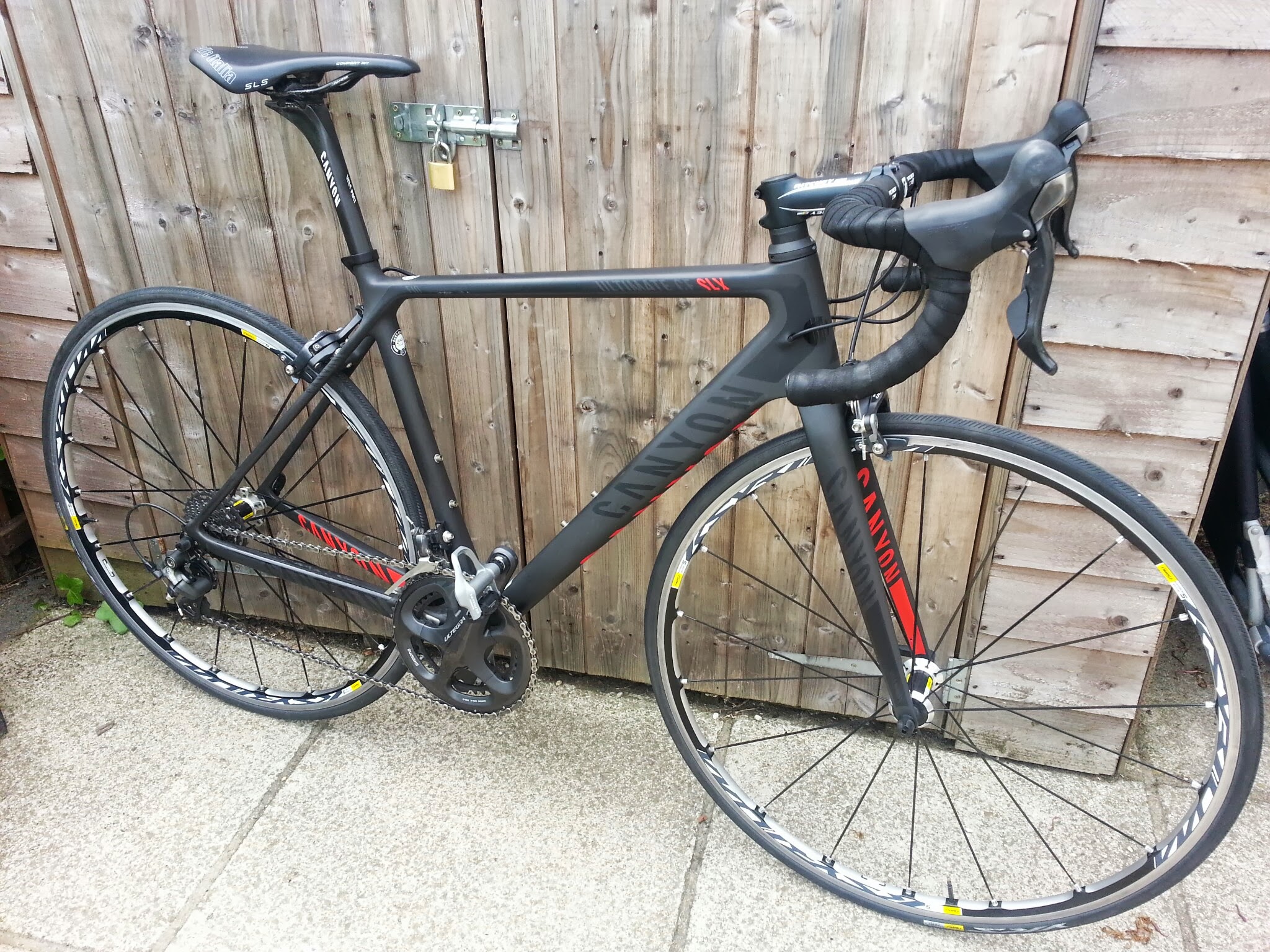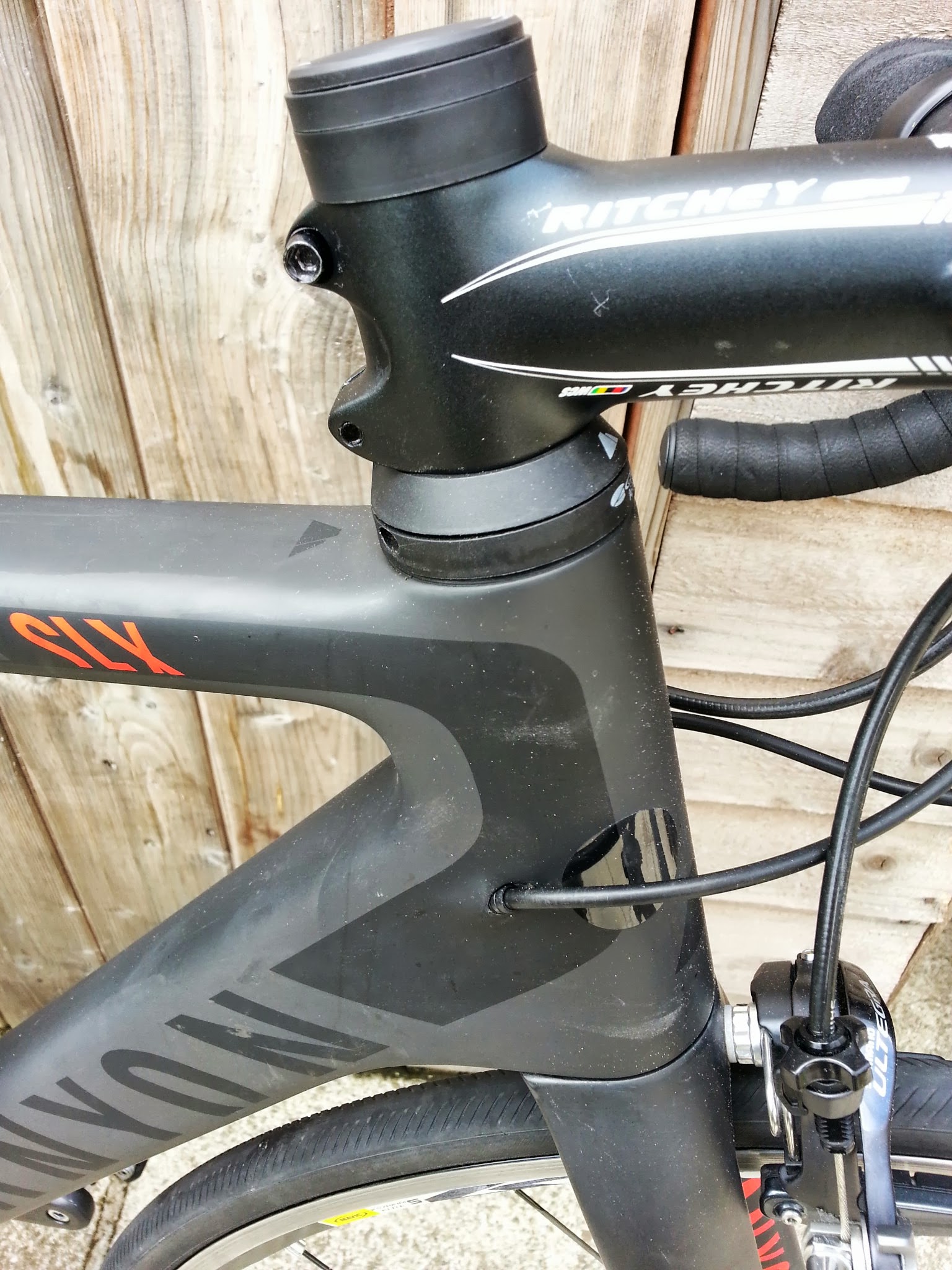Canyon Ultimate CF SLX Review
Having raced for many years I wanted to replicate my ideal position and get the Canyon as close as possible to my current race bike. The frame was a size small; with a 53.7cm top tube its on the cusp for me at 5 ft 9 inches. Though the fashion seems to be for the smallest frame possible nowadays, I could easily spec a medium sized frame. It pays to check the dimensions closely, as the Canyon has a tall front end thanks to the Acros headset which adds 1 cm to the 13.8cm head tube. Looking at their website I probably would go for the small size to try and get the lower position I prefer for racing.
The top tube length and 73.5 degree seat tube angle meant I had to push the saddle all the way back on the rails to give me close to my preferred position; certainly when setting the saddle height there was an acceptable amount of seat post on show. Though the bike was initially a little cramped when I sat in the cockpit – my knees were almost touching the bars when out of the saddle, not helped by the in-sweeping style of the Ritchey WCS Evo Curve handlebars that came with the bike – swapping the 100mm Ritchey WCS stem for a 110mm would have been enough to get it properly dialled.
I am used to a lower, more aggressive racing position than the head tube and Acros headset system allowed; unfortunately, whilst it’s clever, the Acros headset means you have to have a set amount of spacers – about 1 cm – between stem and head tube, one of which contains the allen key bolt via which you tighten the headset. This left me in a marginally more upright position than I’m used to. Canyon do offer a way for racers to ‘slam’ the stem, which requires the removal of the Acros headset system and the use of a normal bung in the steerer tube. However, we have seen photos of a few pro riders in the Katusha team who retain the Acros and use negative riser stems to lower the handlebars. Either way, Canyon are more than happy to help you get it right.
As standard the bike would be good for riders who prefer a more upright, relaxed, less aggressive position without having a big stack of spacers under the stem. Many cyclosportive riders doing long endurance rides may prefer this position and why not, as this group no doubt represent a large part of the market for this bike.
The standard Ritchey handlebars are an odd shape. As mentioned above they sweep back to place the tops closer to the rider. This is fine for just spinning along on the tops but restricts your wrist movement when on the drops and most annoyingly limits your knees’ forward room-for-manoeuvre in an out of saddle hard effort. I was also unsure about the width; they were narrower than my usual bar – 40cm vs my usual 42cm, though you can spec the exact width you require. Once I got used to them though it made more sense to me why so many pros are using narrower bars; they are more aerodynamic and good for fitting through tight gaps in the sprint!
[rps-include blog=127.0.0.1 post=30120]






